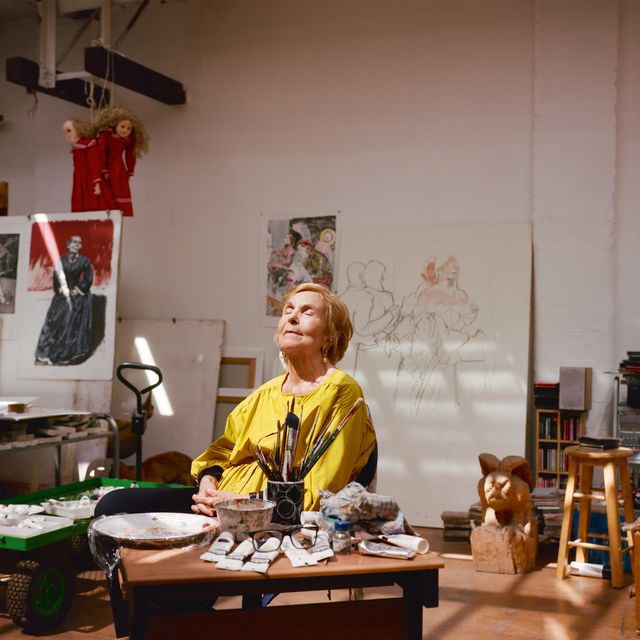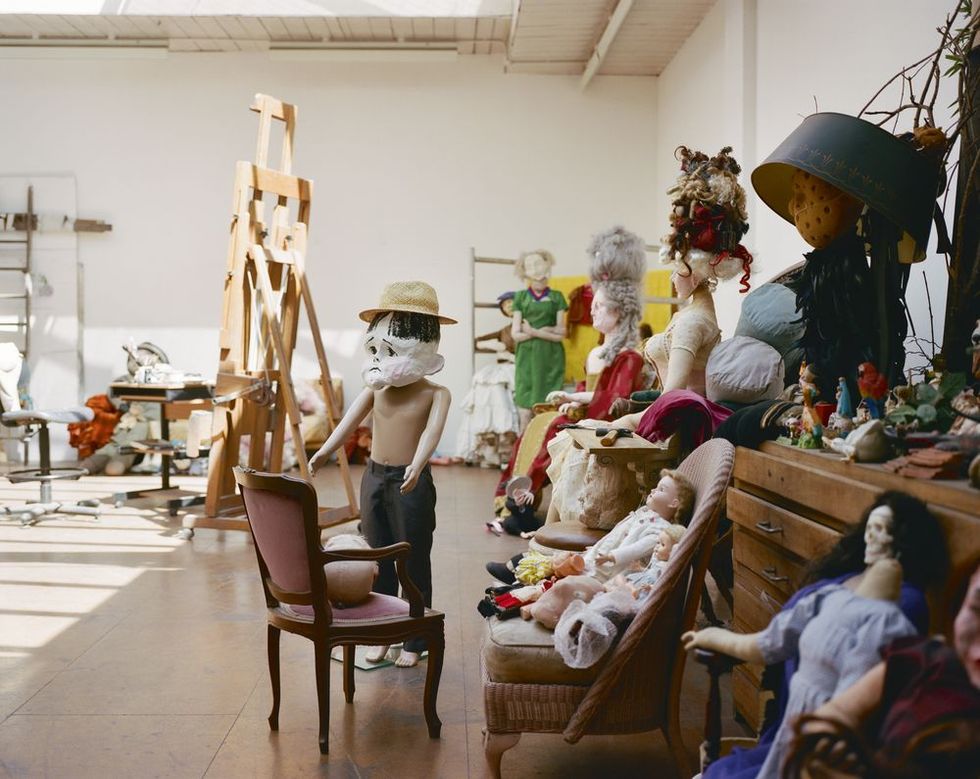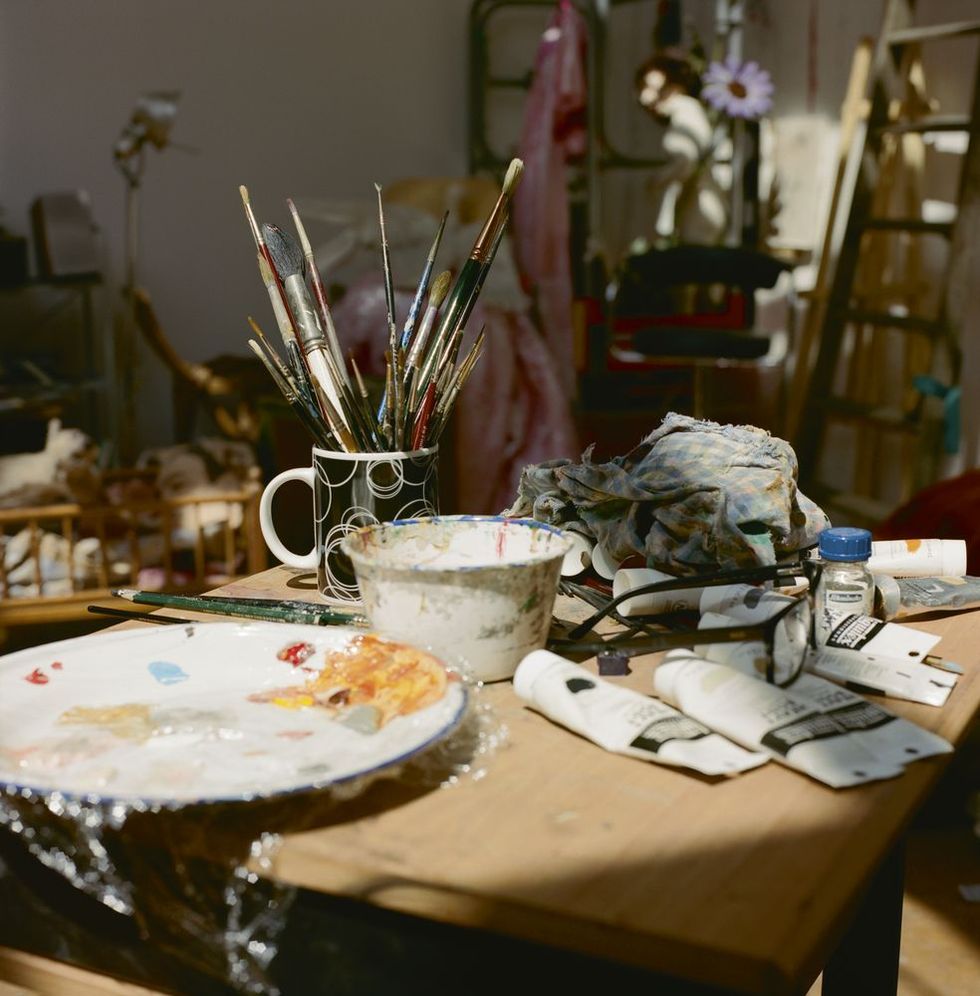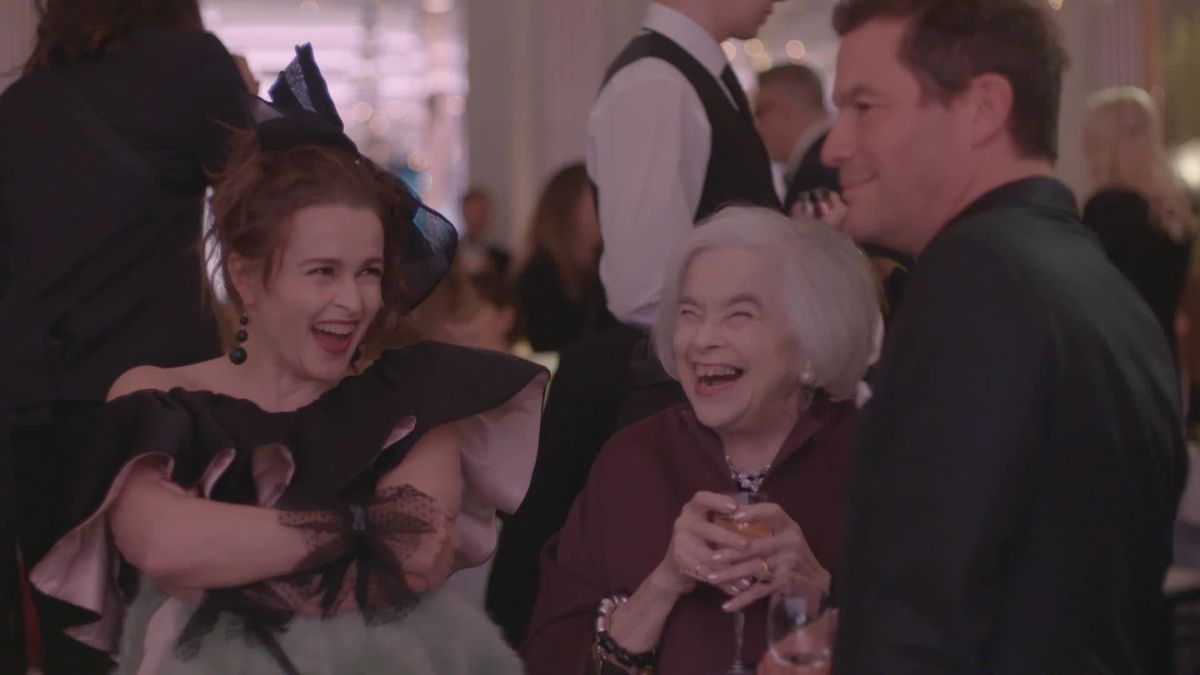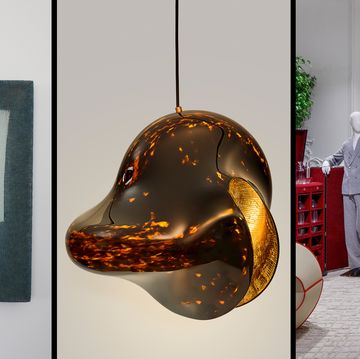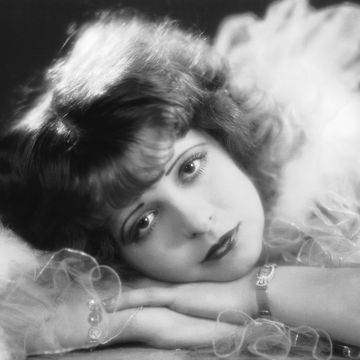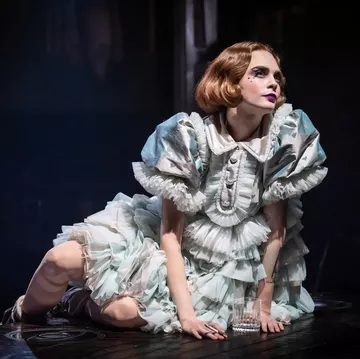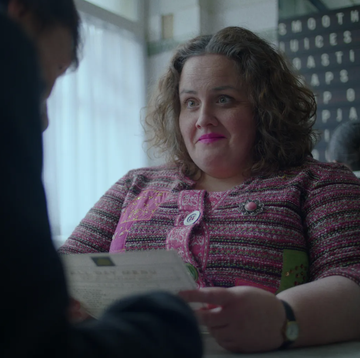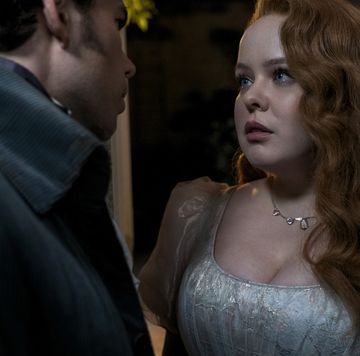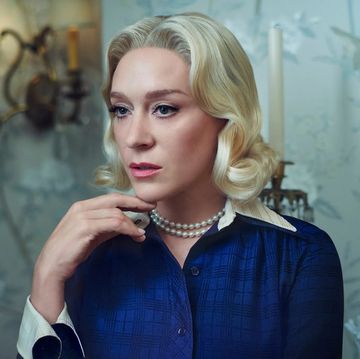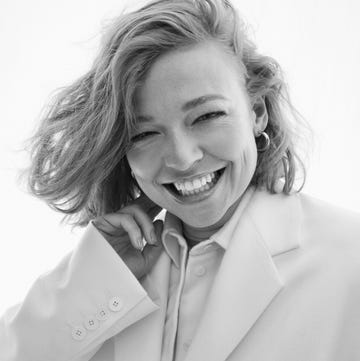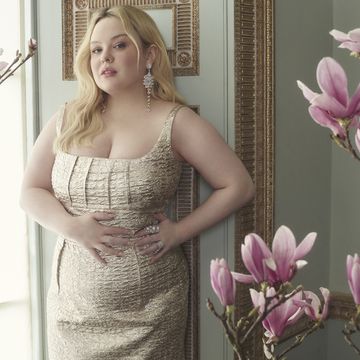The artist Paula Rego has died aged 87 following a short illness, her gallery Victoria Miro has announced. Known for her visceral and provocative canvases influenced by the dark power of fairy tales, the Portuguese-born British artist, to whose immense talent Harper’s Bazaar paid tribute at the 2019 Women of the Year Awards with a Lifetime Achievement accolade, had been exhibiting work since the 1960s, and was recently the subject of a major retrospective at Tate Britain.
Here, we republish the novelist Jessie Burton’s 2019 Bazaar Art interview with Rego, whom she was privileged to meet in her North London studio.
***
Once upon a time, I was invited into Paula Rego’s studio in Camden Town. Wandering through the two large, light-filled rooms, I felt as if I’d gone backstage at a theatre. I wanted to rifle through her endless rails of clothes, her tables piled high with props, to become a character so that she might capture me. I touched nothing, of course – except Rego herself, to shake her hand and thank her for this extraordinary opportunity. She smiled, probably used to this kind of thing. Her eyes were very bright and very dark at the same time, which I suppose is an apt enough description for much of her work.
Usually, when we go to the theatre, we know the play is going to end. Not so in Rego’s studio: she had enough there to furnish decades of performance. Now 84, she explains that “the characters I make are like a team of actors who play different roles. They rest until they are needed again.” Much is made of her predilection for fantasy and theatricality, for what she calls the “transcendental imagination”, the way she assimilates the underbellies of life into innocent-seeming tableaux. Her paintings tell us stories, but none of them has a simple plot; Rego has a trick of manipulating reality to show us what lies beneath. Society has become far more open about mental health and struggling with dark times, but she has been doing this in her work for years. “I’ve found it more useful to dig up our truths and paint them than to bury them,” she tells me. ‘Better to use them than to hide them. They have an energy; a thrill.”
Rego’s work has haunted me for 20 years. It began when I saw some of her paintings in a book on whose pages was a girl, thrusting her arm into the entirety of a policeman’s boot, with a self-possessed expression of intent. I saw women crouching like dogs, snarling in their summer dresses. Girl-children playing games that suggested cruelty. Snow White with her knickers pulled to her ankles by a stepmother in stilettos. Girls having contractions on their sides, or squatting in dignified meditations as their illegal abortions took place. I’d never seen anything like it. There was so much ambiguity, and none of the girls was conventionally beautiful. A thought struck me aged 16, and two decades on I still believe it; one of the reasons Rego’s art is so arresting is her willingness – or her compulsion – to expose the power, eroticism and danger that reside within the female psyche and the female body, and how electrifying it is when they are finally set loose. As she tells me: “I like to turn things on their head. See things from the underdog’s perspective. I’m told I have a streak of perversity.”
Rego has been working since she was a little girl, growing up an only child in a prosperous, liberal middle-class household in Portu- gal when it was ruled by a Catholic, conservative dictatorship. Aged nine, she drew her grandmother sewing, and the result – the ageing, elegant hands, the way the short-sighted old lady peers out – confirmed Rego as a natural. Draughtsmanship remains at the heart of her practice. “I like using pastel because it’s hard and definite, not floppy like a brush,” she says. “I prefer drawing.”
Her father was a cultivated figure and an Anglophile, and in 1951 he arranged for his daughter to complete her education in England, where he believed she would have more chance of flourishing as an artist. In 1952, aged 17, Rego was selected as one of the few girls to attend the Slade School of Fine Art, where she went on to win its student summer prize. (Even now, she maintains that this is the garland of which she is proudest.) Despite such early successes in the UK, she clearly felt ties to her home country, returning to Portugal with her soon-to-be husband, Victor Willing, in 1957, before making London their permanent family home from the 1970s onwards.
Since her middle age, Rego has enjoyed astounding commissions and professional accolades. Nevertheless, you cannot come of age as a woman and an artist in the 20th century without having been touched by its deep-seated prejudices. I ask her what it was like when she began her career. “It was certainly more difficult to start with,” she says. “Women artists weren’t taken seriously at all, and it was very hard to get a show or a gallery. I took my portfolio round and they could barely bring themselves to look at it. They thought women weren’t a good bet because they’d go off and have children, and forget about the work. I told them I already had three children and I hadn’t stopped working.” In the end, she didn’t get a gallery in London until the 1980s, when she was almost 50. Now finally given her due recognition, Rego has a damehood and a museum dedicated to her work in her native country, as well as murals in the presidential palace there.
I ask Rego about the shape of her daily working process today. She says that her assistant and model Lila picks her up in the morning, “then we have a cup of tea and talk and we work till lunch… I bring a sandwich, then I rest for a bit and work till six and go home. That’s it.”
It is the practicality of the sandwich and the “that’s it” that catches me. People who are not artists will always want to know what it means to be one, but this is what lies eternally beneath the mystique: a muse, the physical work and sandwiches. Any further attempts at deconstruction are likely to be futile. “Often, I only discover what a picture is really about once I’ve finished it,” says Rego. “Sometimes a long time after.” After so many years of creative production, it’s certainly not Rego’s job to explain herself. In the studio, she positions Lila, then she sits with a box of pastels in her lap and simply works the paper. Why pin a butterfly to the wall if you really want to enjoy it?
This isn’t to say that Rego is afraid of asking provocative questions in her work. Abortion, war, dictatorships: she has been a political painter all her life, as much as an explorer of the personal psyche. I ask her if growing older has changed the focus of her interests. Her response is robust: “Well, there’s bloody Brexit and apparently we’re killing the planet but I don’t feel ‘older’.” In the face of these frightening potentialities, I wonder what motivates her to keep going. “It’s hard when it’s not going well,” Rego admits. I think of her in the studio with Lila, the last crumbs of the sandwich left behind as she resumes work with her pastel sticks. “But,” she goes on – and her last word on the subject is the rejoinder of a born artist – “I don’t know what else to do.”
